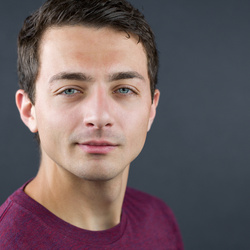The Meike 85mm f/1.8 Pro lens is aimed at giving you a reliable mid-telephoto option without forcing you into the higher prices of first-party glass. If you’re after sharp portraits, controlled depth of field, and a build that feels solid enough for daily use without breaking the bank, it's worth a look.
Coming to you from Andrei Dima, this straightforward video looks closely at the Meike 85mm f/1.8 Pro lens. Dima compares it to Meike’s earlier 55mm f/1.8 Pro, a lens he praised for image quality and color rendering. The new 85mm model improves build quality with a metal aperture ring that feels substantial, a rubberized focus ring, and an overall sturdier design. It also introduces a USB-C port for firmware updates, a detail that can extend the lens’ usefulness. While the lens includes a rubber gasket at the mount, it isn’t fully weather-sealed, something to keep in mind if you shoot in harsher conditions.
Dima highlights the autofocus as the strongest Meike has offered so far, particularly for video. Previous Meike lenses sometimes lagged in continuous autofocus, but this model shows smooth and reliable tracking without hunting. He notes the lack of focus breathing, which makes it appealing if you want to shoot video without distracting frame shifts. The aperture ring is clicked, adding tactile control, which is useful for switching depth of field while filming. These features make the lens especially versatile if you split your time between stills and video.
Key Specs
-
Maximum aperture: f/1.8
-
Minimum aperture: f/16
-
Minimum focus distance: 0.85 m
-
Filter thread size: 62 mm
-
Weight: 389 g
-
Optical design: 8 groups, 11 elements (2 ED, 3 high refraction, 1 aspheric)
-
Size: 76 x 95 mm
In terms of image quality, the lens performs well wide open at f/1.8, with sharp rendering in the center and only slightly softer corners. Stopping down to f/2.8 evens things out across the frame, and by f/4, contrast is noticeably stronger in the corners. Chromatic aberration is well controlled, with only minor purple fringing visible at wider apertures if you go looking for it. Vignetting is present wide open but corrects easily in post. Flare does appear when shooting directly into strong light, though Dima suggests it doesn’t hurt contrast significantly and can even look pleasing depending on how you use it.
The 9-blade diaphragm gives a rounded bokeh, and Dima points out that the transitions from in-focus to out-of-focus areas look smooth. For portraits, this quality often matters more than absolute sharpness. He also mentions that despite its relatively low cost of about $330, the lens holds its own against pricier first-party 85mm lenses, some of which show less consistent sharpness wide open. Check out the video above for the full rundown from Dima.






